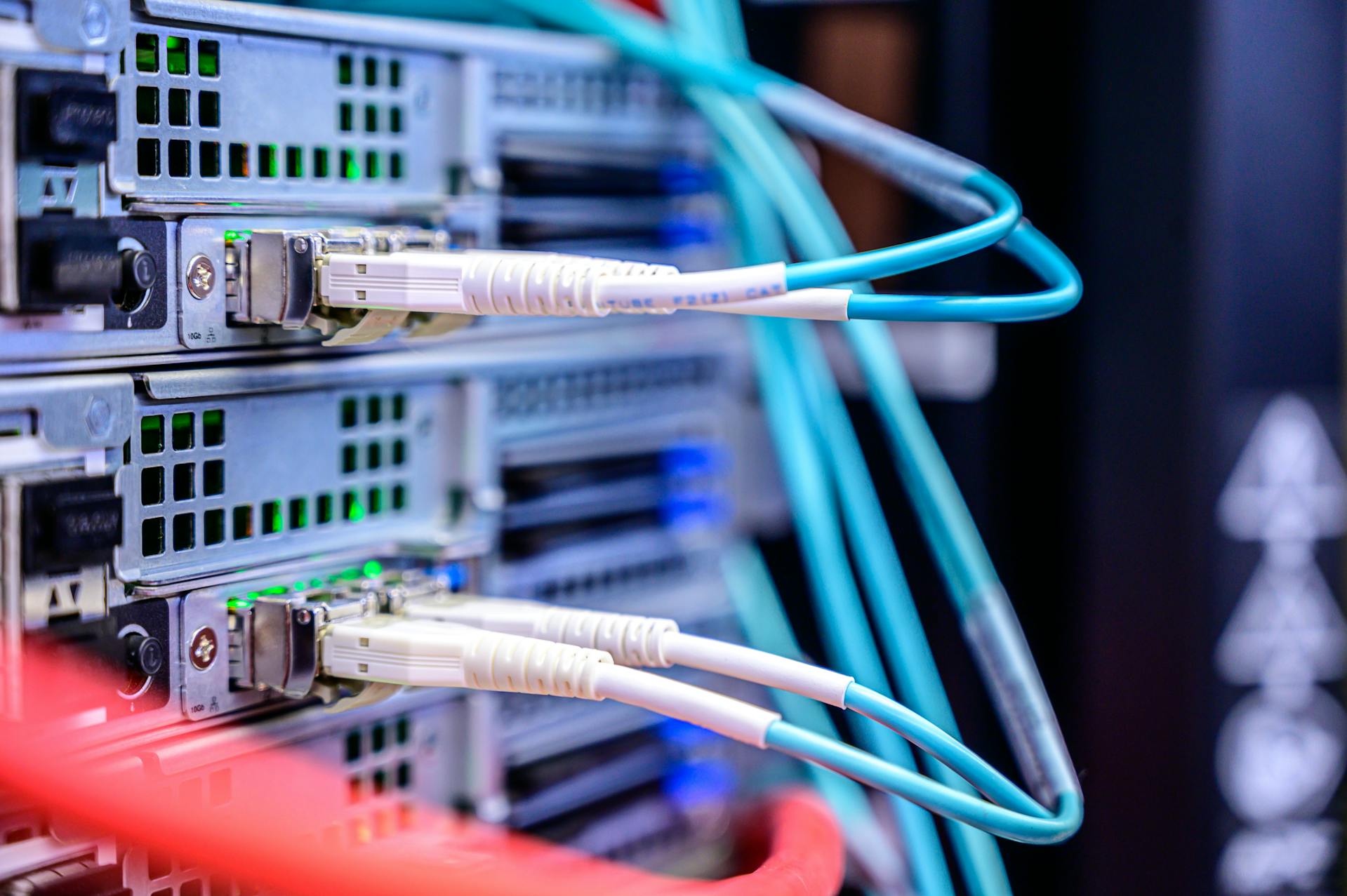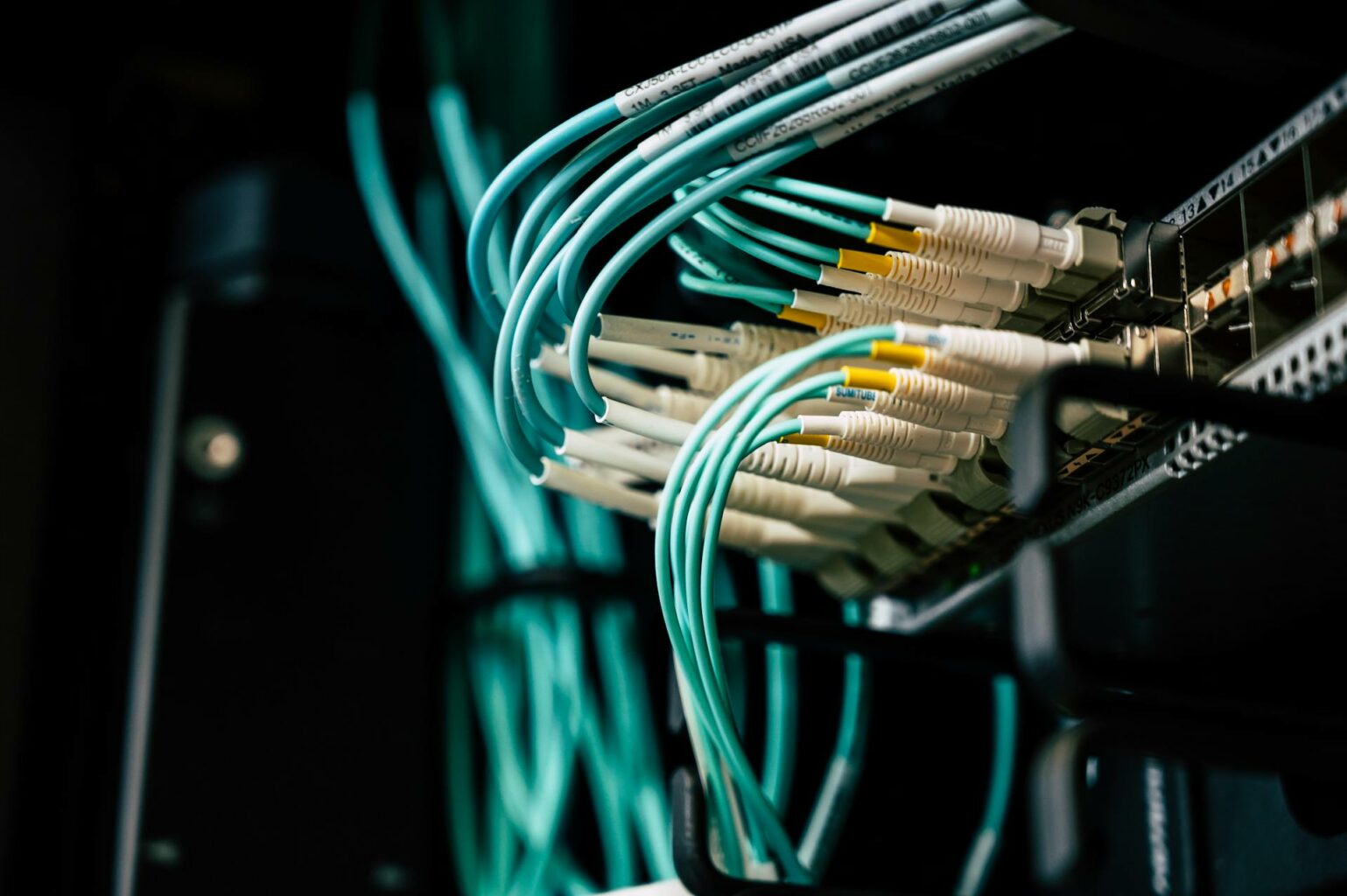 Home >
Home > 
IPv4 vs IPv6: Key Differences
Discover the differences between IPv4 and IPv6. IP version 4 (known as IPv4) and IP version 6 (known as IPv6) are the two leading Internet Protocol (IP) standards necessary for data operation and communication on the Internet. These protocol standards allow devices to identify each other and communicate in a network, facilitating information exchange. Ready to learn their main characteristics and differences? Read on.
- What Is IPv4 and IPv6
- What is the Difference Between IPv4 and IPv6
- Benefits of IPv6 vs IPv4
- Address Formats: IPv4 vs IPv6 Address
- Why is IPv6 better than IPv4?
- Should You Use IPv4 or IPv6?
- Transitioning from IPv4 to IPv6
- IPv4 vs IPv6 in Real-World Applications
- Stands Adblocker: Why You Should Choose It
- FAQ
What Is IPv4 and IPv6
Internet Protocol (IP) is a set of rules for routing and addressing data to transit across networks and reach the correct destination. Within the types of IP protocol, we find:
- IP version 4 (IPv4): Introduced in 1983, IPv4 uses 32-bit addresses, which yield approximately 4.3 billion unique addresses. However, IPv4 has become insufficient due to the growth of devices connecting to the Internet.
- IP version 6 (IPv6): Developed in 1999 to address the shortage of addresses, the IPv6 uses 128-bit addresses, offering unlimited IP addresses. It also introduces improvements in security and efficiency.
Understanding the IPv4
IPv4 is the fourth version of IP and the first to be widely used. It uses a 32-bit addressing scheme, represented in dotted decimal notation. Even if it has been fundamental in developing the Internet, its limited space has led to implementing techniques such as Network Address Translation (NAT).*
* NAT (or network address translation) is a technology that allows several devices on a local network (with private addresses) to share a single public IP address to access the Internet. This is useful because IPv4 addresses are limited, and NAT helps reduce the number of public IP addresses needed.
Introduction to the IPv6
IPv6 is the latest version of IP, developed to substitute IPv4. It uses 128-bit addresses and simplifies the packet header (the part containing the source, destination, and type of data), enhances routing efficiency, and offers security features such as Internet Protocol Security (IPsec).*
*IPsec refers to secured network protocols that authenticate and encrypt data for encrypted communication.

What is the Difference Between IPv4 and IPv6
1. Addressing and Routing
IPv4 uses 32-bit addresses and relies mainly on NAT due to the shortage of addresses. IPv6, with 128-bit addresses, implements NAT redundant, enabling more straightforward end-to-end data communication.
2. Better Security
While IPv4 can use IPsec optionally, IPv6 integrates IPsec as a required feature, providing authentication and data confidentiality at the network level and reinforcing communications security.
3. Speed and Performance
IPv6 has more efficient routing because of its simplified header format and lack of fragmentation by intermediate routers. IPv6 is designed to handle the growing volume of Internet traffic more efficiently, especially with the growth of online devices and services.
Benefits of IPv6 vs IPv4
IPv6 was developed to overcome the limitations of IPv4, offering significant improvements in addressing, efficiency, and security. Its implementation is key to the growth of the Internet and the growing interconnectivity of devices.
Larger Address Space
How are IPv4 addresses different than IPv6 addresses? Most likely, the most significant difference between IPv6 and IPv4 is the greater addressing space.
- IPv4 uses 32-bit addresses, which give approximately 4.3 billion unique addresses.
- IPv6 uses 128-bit addresses, which provide approximately 340 undecillion unique addresses.
Efficiency and Scalability
IPv6 offers several optimizations for scalability and efficiency. Its more efficient header format reduces the processing load on routers, improving the network's overall performance. It also allows devices to automatically receive an IP address without requiring a Dynamic Host Configuration Protocol (DHCP) server*, simplifying the management of large networks. With more addresses and a more streamlined architecture, IPv6 is ideal for the IoT (Internet of Things) era.
*A DHCP Server is a network server that automatically provides and assigns IP addresses.
Are you worried about Chrome not being efficient enough? Learn how to clear cache in Chrome: Tips & Tricks.
Enhanced Security Features
IPv6 incorporates improved security mechanisms compared to IPv4, for example:
- Integrated IPsec: IPv6 includes IPsec as a required feature, providing authentication and native encryption for communications and reinforcing network security compared with IPv4.
- Protection against attacks: IPv6 implements the Neighbor Discovery Protocol (NDP), which prevents address spoofing attacks* and improves device authentication on the network.
- Improved privacy: IPv6 protects devices' identities and avoids tracking based on MAC (media access control) addresses.
- Significant upgrade: IPv6 represents a considerable advance over IPv4. Although its adoption is gradual, its efficiency and security advantages make it the key protocol for global connectivity.
*In an IP spoofing attack, an attacker will send IP packets from a spoofed IP address to hide their true identity.
If you want to discover how to personalize your online browsing, choose the best option between Adblock vs. Adblock Plus.

Address Formats: IPv4 vs IPv6 Address
IP addresses are essential for network communication, identifying devices, and facilitating data transmission. IPv6 and IPv4 use different address formats, which impact their capacity, efficiency, and scalability.
IPv4 Address Format
- IPv4 uses a 32-bit addressing system represented in decimal dotted notation.
- Made up of four octets (8 bits each), separated by periods (.).
- Each octet can have a value between 0 and 255.
- Example of an IPv4 address: 192.168.1.1
Characteristics of IPv4
- Simplicity and compatibility with the majority of current systems.
- It needs NAT (Network Address Translation) to manage the scarcity of addresses.
- It can use subnets and network masks to optimize the allocation of addresses.
IPv6 Address Format
- IPv6 uses a 128-bit addressing scheme.
- It is represented in hexadecimal notation separated by colons (:).
- It consists of eight groups of 16 bits each.
- The initial zeros of each group can be omitted to shorten the representation.
- Example of an IPv6 address: 2001:0db8:85a3:0000:0000:8a2e:0370:7334
IPv6 features
- Address space is vastly superior to IPv4.
- Does not require NAT, allowing direct communication between devices.
- Includes integrated security features, such as IPsec.
- Supports automatic self-configuration (SLAAC), eliminating the need for DHCP servers in many cases.
Why is IPv6 better than IPv4?
IPv6 was designed to overcome the limitations of IPv4. Some of its key advantages are explained below.
Autoconfiguration Capabilities
The IPv6 auto-configuration simplifies the administration of large networks. This IP reduces dependence on DHCP servers and allows faster and more efficient connections.
Optimized Routing Protocols
Its configuration allows for a lower load on routers, more efficient communication without the need for NAT and better support for complex and dynamic networks.
Support for IoT and Modern Technologies
IPv6 supports the growing demand for Internet-connected devices, including the IoT, by enhancing connectivity and performance, implementing new technologies without IP address restrictions, and enabling more secure and efficient connections.
Would you like to know more about online security? Discover why is two-factor authentication necessary.

Should You Use IPv4 or IPv6?
The choice between IPv4 and IPv6 depends on several factors, including network infrastructure, device compatibility, and security requirements. Although IPv6 offers numerous benefits, its adoption is still gradual. Let's explain the difference between IPv4 and IPv6 and some factors to consider:
Factors to Consider
When evaluating whether to use IPv4 or IPv6, it is essential to consider the following:
- Availability of IP addresses: IPv4 has a limited address space, while IPv6 offers unlimited addresses.
- Device and network compatibility: Some older devices and systems may not be compatible with IPv6, which could lead to interoperability issues.
- Security: IPv6 includes IPsec natively, which provides an improved level of protection compared to IPv4.
- Better performance: IPv6 eliminates the need for NAT, allowing for more direct and efficient communication between devices.
- Implementation costs: Migration to IPv6 may require hardware and software upgrades, which implies an investment for companies and Internet service providers.
Home and Business Use Cases
Currently, most households use IPv4 due to compatibility with Internet Service Providers (ISPs) and home network devices. However, with the growth of IoT, the adoption of IPv6 is accelerating.
On the other hand, companies that manage many devices and cloud services can benefit from IPv6's scalability. Today, data centers and cloud service providers are adopting IPv6 to improve efficiency and security.
Transitioning from IPv4 to IPv6
The transition to IPv6 is an ongoing process with various approaches and challenges. Although IPv6 is the future of the Internet, IPv4 will continue to be used for many years.
Dual-Stack Technology
One of the most common strategies for transitioning from one protocol to another is implementing a dual stack, which allows devices and networks to operate with IPv4 and IPv6 simultaneously. Among the advantages of dual-stack technology are greater compatibility with devices and services that still depend on IPv4, gradual migration without interruptions in connectivity, and a reduction in compatibility problems.
However, implementing the dual stack could generate additional hardware and network administration costs and increase operational complexity.
Challenges in Adoption
However, despite the advantages of IPv6, transitioning from IPv4 to IPv6 faces several challenges. Not all network devices and operating systems are natively compatible with IPv6, so they require updates or replacements. Also, migration to IPv6 can be complex for network administrators; it could also involve a more significant investment, and we cannot fail to mention that IPv4 still has wide implementation and compatibility in the business sector.
Global IPv6 Adoption Trends
According to the Global IPv6 Development Report 2024, the implementation of IPv6 was accelerated in 2023. An increasing demand for applications such as 5G, IoT, and cloud computing made a larger-scale transition from IPv4 to IPv6 increasingly relevant. In 2023, IPv6 deployment accelerated significantly, exceeding 30% global coverage. Among the leading countries, the IPv6 coverage rate approached 70%, and IPv6 mobile traffic exceeded IPv4 traffic.
However, it is worth mentioning that developing improved infrastructure is essential for implementing IPv6 and IPv6-enhanced technologies and for a country's digitization capacity.

IPv4 vs IPv6 in Real-World Applications
The adoption of IPv6 significantly impacts various applications, from online gaming to the expansion of the IoT. Although IPv4 is still widely used, IPv6 offers performance, security and scalability improvements.
IPv6 and Gaming
Online gaming requires fast and stable connections, which is why IPv6 offers key improvements for gaming:
- Less latency and better performance: IPv6 allows more direct communication between players, reducing response time by eliminating the need for NAT.
- Better P2P connectivity: Many online games rely on peer-to-peer (P2P) connections, which work better with IPv6 by allowing direct connections without private address restrictions.
- Greater stability on dedicated servers: By having unique IP addresses for each user, servers can better manage connectivity and resource allocation.
IPv6 and VPNs
Virtual private networks (VPNs) allow users to protect their online privacy and access geographically restricted content. IPv6 also introduces advantages in this area, such as:
- Greater integrated security: IPv6 improves traffic protection compared to IPv4.
- Better connectivity without NAT: VPNs that support IPv6 can establish more direct connections without NAT interference.
- Avoids IPv4 overload: With IPv4, some VPNs must assign private IP addresses due to the limited address availability, while in IPv6, each user can have their own unique address.
IPv6 in IoT
The IoT is based on the interconnection of intelligent devices, where IPv6 plays a key role. For example, IPv6 allows virtual assistants such as Alexa and Google Home to communicate directly with multiple devices and facilitates communication between intelligent vehicles, improving road safety. Let's find more benefits of the implementation of IPv6 in IoT:
- More IP addresses: IPv6 allows unique addresses to be assigned to billions of devices without requiring NAT.
- Greater energy efficiency: IPv6 optimizes using limited resources in sensors and smart devices.
- Better security: With integrated IPsec and improved authentication mechanisms, IPv6 better protects communications between IoT devices.
- Auto-configuration: IPv6 facilitates the automatic connection of devices without the need for manual configuration or intermediate servers.
Stands Adblocker: Why You Should Choose It
What is Stands Adblocker?
Now that we are focusing on online security and privacy issues, if you want better control over the content you interact with, Stands AdBlocker is a free browser extension designed to improve your browsing experience by blocking ads on websites and platforms such as YouTube. Did you know that eliminating adverts also helps to protect your privacy by preventing you from interacting with misleading advertising? Let's learn more about the ad blocker extension for Google Chrome, Stands Free AdBlocker.
Advantages of Stands Adblocker
- Reduce online risks: By blocking all adverts, Stands also prevents you from coming across misleading advertising that may contain malware or unwanted redirects.
- Intuitive interface: Designed for ease of use, it allows for simple installation and configuration without needing advanced technical knowledge.
- Cross-platform compatibility: It works in browsers such as Chrome, Firefox, Opera, Brave, and Vivaldi and is also an excellent adblock for Edge. Stands offers a version for Android devices: Stands Browser.
Would you like to discover more about PfBlockerng vs Pi-hole and which tool is best for blocking unwanted content, trackers, and malware?
FAQ
How do IPv4 and IPv6 handle data security differently?
IPv6 was designed with greater security compared to IPv4. A notable difference is the native integration of IPsec in IPv6, which provides greater confidentiality, authentication, and integrity of information.
How are IPv4 addresses different than IPv6 addresses?
Both protocols differ in the address length, format, and address space.
Which is faster: IPv4 or IPv6?
IPv6 is more efficient than IPv4, as it eliminates the need for NAT and has more optimized routing. However, the speed difference may be minimal due to the optimization of existing IPv4 networks.
Should I use IPv4 or IPv6?
The choice between IPv4 and IPv6 depends on your needs and the network environment. IPv6 offers advantages such as a larger address space, greater security, and routing efficiency. However, the adoption of IPv6 is still in progress.
